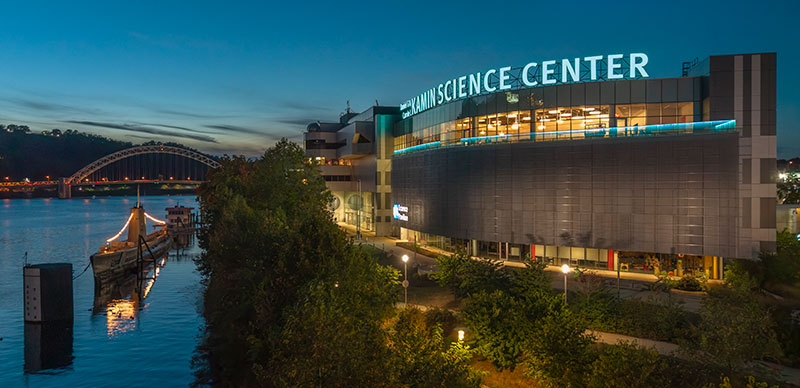Pollinators welcome
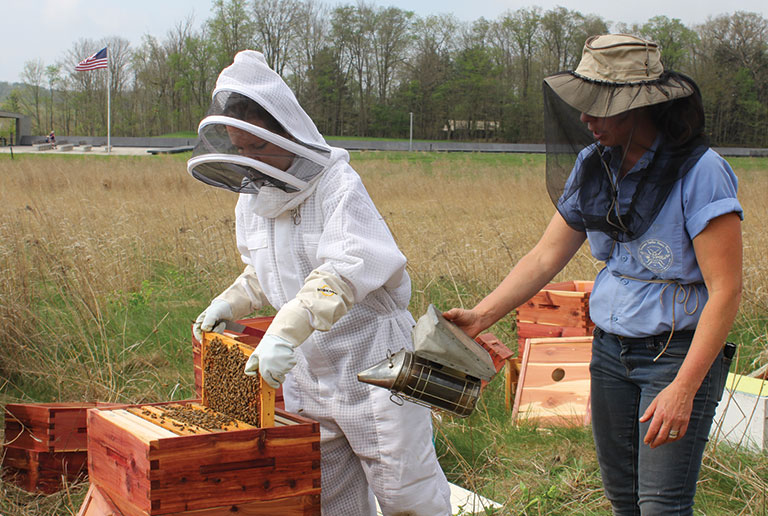
Powdermill’s Andrea Kautz (left) and Darci Sanner, co-owner of Summer Smiles Honey Farm, populate one of eight new honeybee colonies at the Flight 93 National Memorial.
Most visitors to the Flight 93 National Memorial in Shanksville, Pennsylvania, will never see the eight new honeybee colonies on the park’s grounds, but the work of their resident pollinators will help ensure that healthy wildflowers will grow there for years to come. Installed this past May, the colonies are the product of a collaboration of the Friends of the Flight 93 National Memorial, Summer Smiles Honey Farm, and Carnegie Museum of Natural History’s Powdermill Nature Reserve. In 2016, the Powdermill team began taking inventory of the bee species at the memorial site, and the Garden Club of Allegheny County chipped in to help replenish some of the native wildflowers. “The first step was determining what the bee community at Flight 93 looks like, and then seeing how our efforts of establishing additional bee foraging habitat will benefit it down the road,” says Powdermill research entomologist Andrea Kautz. “Now we can monitor the bee-plant interactions as part of our ongoing research into what has become a global shortage of pollinators.”
CMOA says “search this”
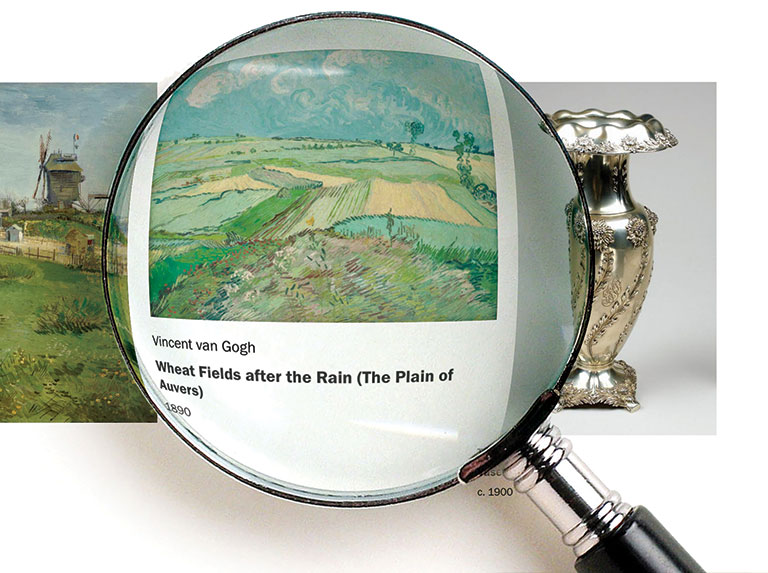
Carnegie Museum of Art boasts more than 32,000 visual art objects, and nearly 80,000 negatives by photographer Charles “Teenie” Harris. Now you can search most of the museum’s collection by way of its new digital collection site, which makes more than 88,500 works available online. The collection site features different, randomly selected works of art each time you visit. And in addition to searching by name and artist, visitors can search by creation or acquisition date, and what’s currently on view at the museum and in specific galleries. Check it out at collection.cmoa.org.
I love events at The Warhol. It’s an interactive museum and this is an interactive fashion show. Andy Warhol’s fascination with celebrity was heightened by the fashion designers who created their iconic looks. I, like Andy, collect these connections to history.
– Richard Parsakian of Eons Fashion Antique in Shadyside, as told to the Pittsburgh Post-Gazette during the fashion show he helped organize in conjunction with The Warhol’s exhibition, Adman: Warhol Before Pop. Parsakian showcased nine looks of the 1950s from his personal archives.
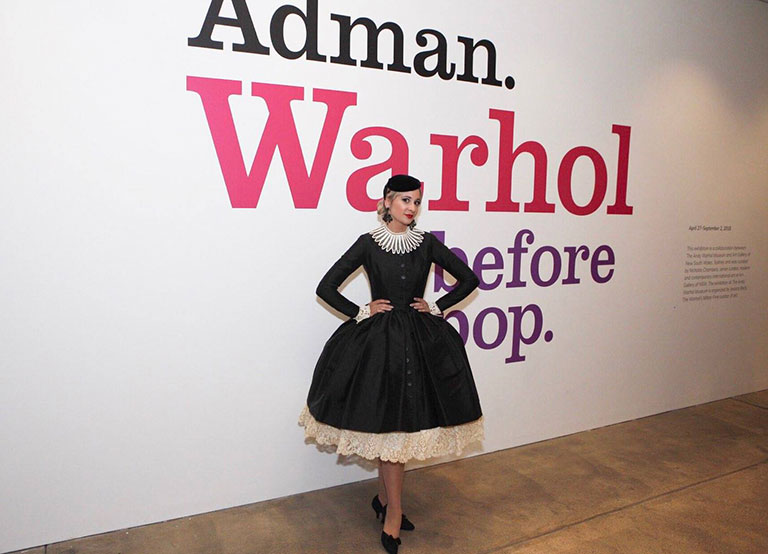
Photo: Sean Carroll
An “OMG” research moment
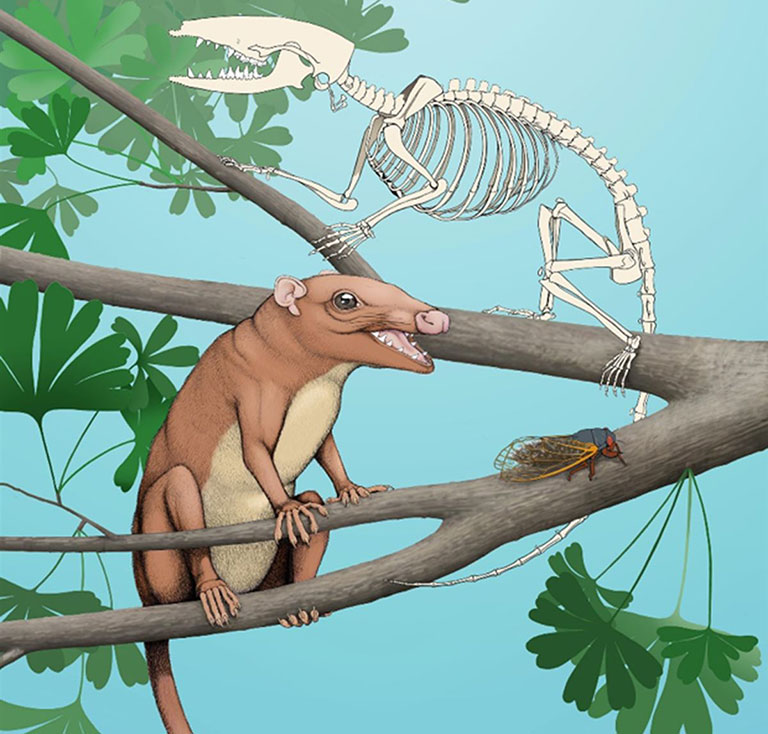
Illustration by Paul Bowden
It takes a lot to impress John Wible, who has focused his decades-long scientific career on the origins of mammals. But when the Carnegie Museum of Natural History curator got his first glimpse of a beautifully preserved, 126-million-year-old fossil discovered in a quarry in China’s Inner Mongolia, he knew it was something special. “I thought, ‘Oh my God, this is amazing,’” Wible recounted to the Pittsburgh Post-Gazette. “It was amazingly complete. And there were skeletal parts of the body that were not known in other animals of that time period.” Wible was part of the team of international scientists that studied the fossil and, in June 2018, announced it was a completely new form of placental mammal relative, christening it Ambolestes zhoui. As with other fossils from Inner Mongolia, it had been discovered by splitting rocks—revealing a specimen with nearly all its bones preserved, including some bones that have never been found before in any mammal from the Age of Dinosaurs.
Prestigious support
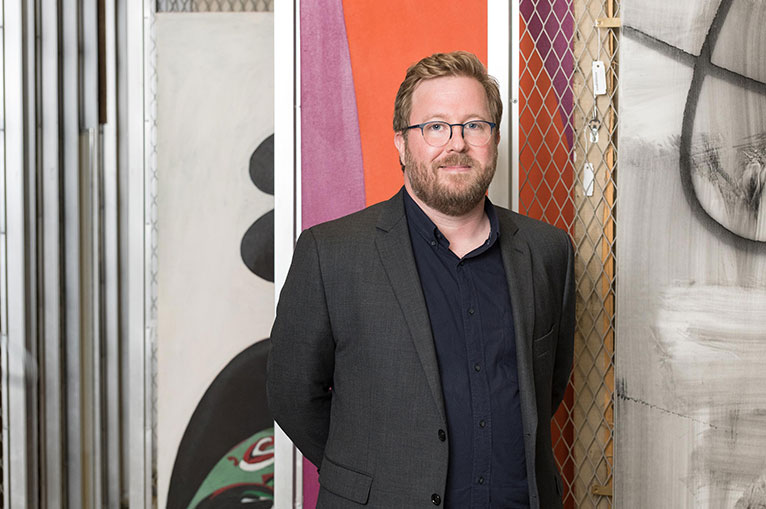
Photo: Bryan Conley
Carnegie Museum of Art’s Eric Crosby is one of six recipients of The Andy Warhol Foundation for the Visual Arts’ Spring 2018 Curatorial Research Fellowships. He received a grant of $50,000 to support travel, archival research, and other activities. Crosby, who is the museum’s Richard Armstrong Curator of Modern and Contemporary Art, plans to use the funds to conduct research for a group exhibition on economic inequality in America that will feature work by more than 30 artists. Titled Working Thought, the exhibition will “engage a new network of artists, curators, writers, and thinkers from around the country right here in Pittsburgh,” Crosby notes.
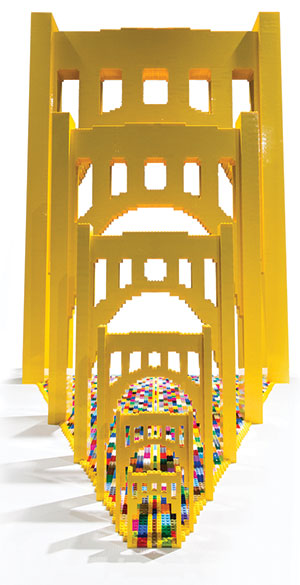 12,380
12,380
That’s the number of Lego bricks used by artist Nathan Sawaya in his custom creation, Perspective on Three Sisters Bridges, inspired by Pittsburgh’s Roberto Clemente, Andy Warhol, and Rachel Carson bridges. The 46-by-67-by-45-inch sculpture is on view now as part of The Art of the Brick exhibition at Carnegie Science Center.



